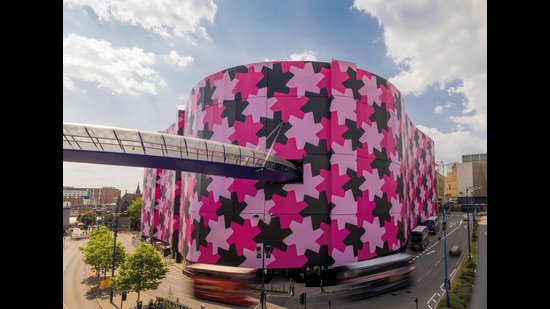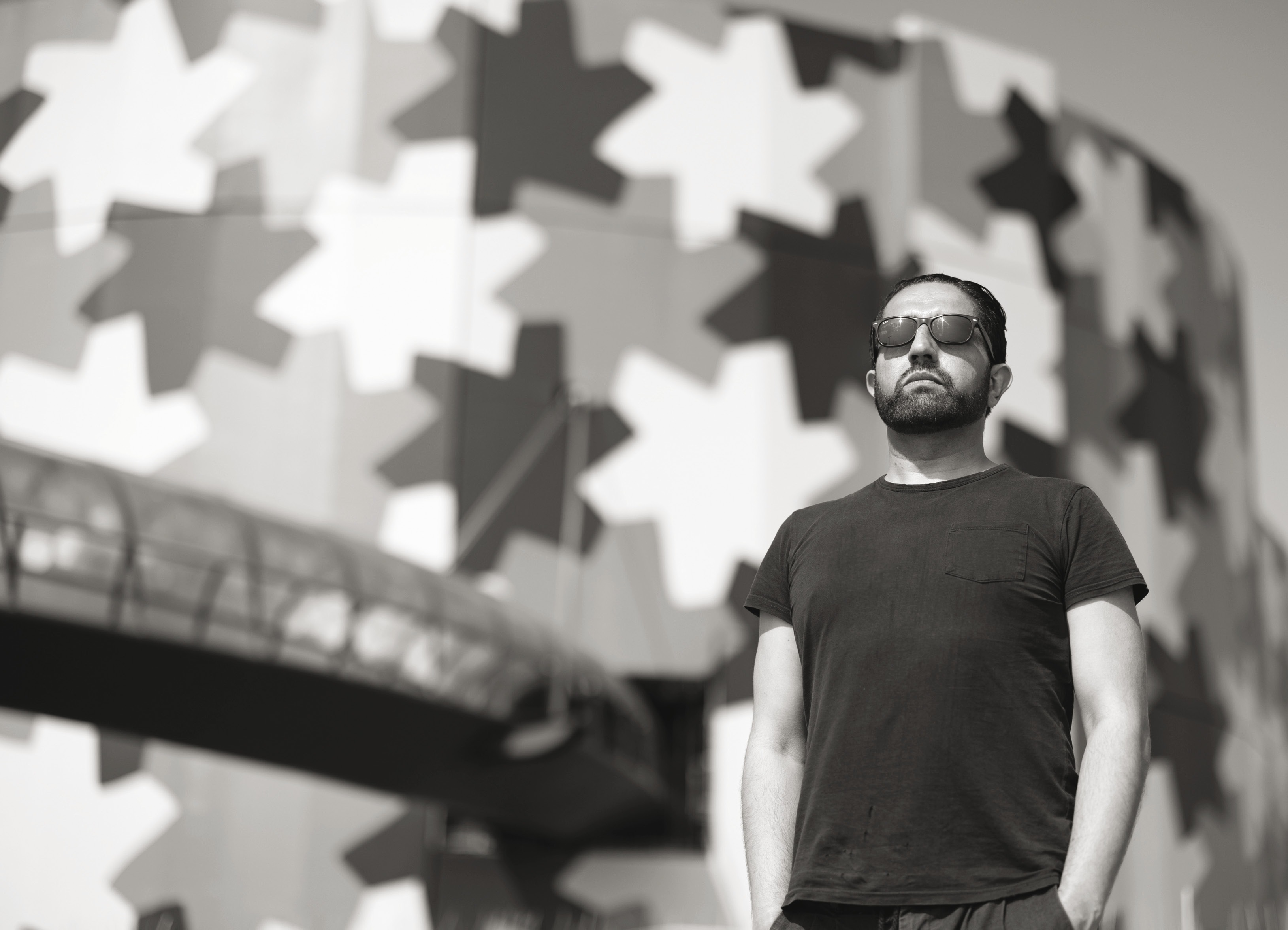
Fashion: The South Asian who’s covered Selfridges in black and pink
Osman Yousefzada is one of Britain’s most outspoken creatives, using his voice to talk about socio-cultural issues across multiple media. Best known for his work in fashion, the British Afghan-Pakistani is a regular at London Fashion Week and Lady Gaga, Beyonce, Alia Bhatt and Kareena Kapoor Khan have all worn his designs.
But 44-year-old Osman is far more than a fashion designer and does not appreciate being slotted only into that space. Known for looking at the West’s relationship with the East (or Global North and Global South as he refers to these regions), he is more of a social commentator than anything else, who uses his work, including fashion, to put the spotlight on matters that are usually unseen.
“My work has expanded since I started my eponymous label in 2008 as more of a multi-disciplinary practice. But the theme of migration is the key across all these outputs,” says Osman. “In garment-making, the racialised off-shore sites of production are a new form of neo-colonialism.”
Consuming passion
At London Fashion Week last May, Osman presented a short film shot in Bangladesh, titled Her Dreams Are Bigger. The film focussed on the women who produce the clothes of fast fashion.
“I’m still trying to grapple with how we consume,” he says. One of the women interviewed in the film said the consumers of the garments she makes are “not black like me, they’re much fairer and very pretty.” The short but powerful film is a reminder that at the heart of the garment industry are these often ill-treated women.

“Fast fashion uses white faces to sell and brown hands to produce,” says Osman. In his own collections, he has tried to address issues of consumption through his “Last Yards” concept, which uses surplus fabric to make limited edition pieces.
In many ways, Osman’s work as a sculptural artist has an even stronger voice. His 2018 work titled A Migrant’s Room of Her Own shows all the objects wrapped in cloth or packed in bags – a reflection on how migrants always live in the hope of a more promising future. It is a story Osman has lived himself – he is the son of illiterate immigrants who moved to England in the 1960s in the hope of giving their family a better future.
Without borders
His latest is a giant public artwork that stretches nearly 50 meters in height and 250 meters in length, making it the world’s largest canvas. It was unveiled just a few weeks ago and covers the facade of Birmingham’s Selfridges store, which is currently undergoing a major renovation. The artwork has a star-like pattern in shades of pink and black. Bright and bold, the message it holds is layered.
Osman was awarded this commission through an international competition led by the globally-renowned Birmingham gallery, Ikon, a space Osman had worked with earlier.
“It was an amazing honour to be chosen in the city of my birth. It felt like a homecoming. You can see the building from the streets of Balsall Heath where I grew up, which is on the wrong side of the tracks. Then right bang in the heart of town is my work. It is a bit like Jude the Obscure by Thomas Hardy, a working class guy who dreams of becoming something more,” he says.

The work is named ‘Infinity Pattern 1’ and as fresh and contemporary as it is, it challenges all the standard views on migration.
“It is about borderless spaces. The pattern work harks back to geometric designs in spaces that do not evoke borders. You see these geometric motifs in mosques and also in the fan arches of cathedrals. The pattern goes on and on; there is no end. Your eyes keep looking for the end but the tessellations evoke infinity,” explains Osman.
It’s not surprising to learn that he had studied anthropology at London University’s School of Oriental and African Studies.
This is a theme that will continue in Osman’s next piece of work - a memoir entitled ‘The Go-Between: A Memoir of Growing Up Between Different Worlds’, slated for a January release. Osman is proof that creativity cannot be pigeon-holed.
Infinite possibilities
Osman’s influences are global and India is among the countries he looks up to, he says. “My last trip to India was five years ago. It is always so familiar and yet so new on each visit, to be amongst people who look like me, yet then have different experiences. I live in the Global North as the child of migrants who came from Pakistan and made a new life, but I have so many affinities to the region. It is like being connected but disconnected all at the same time. I suppose that is why they call people like me BBCD (British Born Confused Desi),” he says.
Among the Indian artists who inspire him are photographer Dayanita Singh and Bangalore-based Sheela Gowda, who uses everyday objects to make her works. In his fashion work, he often borrows from India’s rich craft heritage and frequently works with artisans in the country – something he always acknowledges in his press notes. Among the Indian traditions he has referred to is kantha, a centuries-old technique of upcycling. And his next fashion collection will continue to look at consumption issues.
“I will be using material that is fully traceable. Its supply can be mapped back to the source of filaments and then I will look at unpacking the end of life of consumption patterns,” says Osman.
The Infinity Pattern’s motif will be seen in the collection, too. “Through this work I suggest infinite connectives and infinite possibilities. It’s very much about hope, and the possibility to dream.”
Dubai-based fashion journalist Sujata Assomull is also an author and an advocate of mindful fashion
From HT Brunch, August 29, 2021
Follow us on twitter.com/HTBrunch
Connect with us on facebook.com/hindustantimesbrunch
https://ift.tt/2WA04xF
Fashion
Bagikan Berita Ini














0 Response to "Fashion: The South Asian who’s covered Selfridges in black and pink - Hindustan Times"
Post a Comment